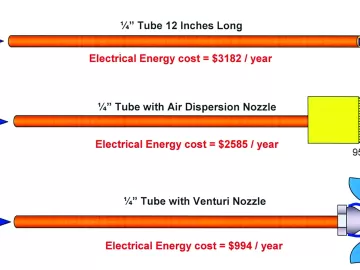Compressed Air Training; It’s a Gold Mine!
Employees of New Gold’s New Afton Copper/Silver/Gold Mine, located just West of Kamloops, British Columbia, Canada have just completed an intensive round of Compressed Air Challenge and in-house compressed air efficiency training for their employees. The awareness raised by these seminars has already led to significant improvements to system efficiency. Further efforts initiated by Andrew Cooper, an Energy Specialist hired through special support from BC Hydro’s Power Smart program are set to gain even more power savings and improve their compressed air system reliability and stability.












